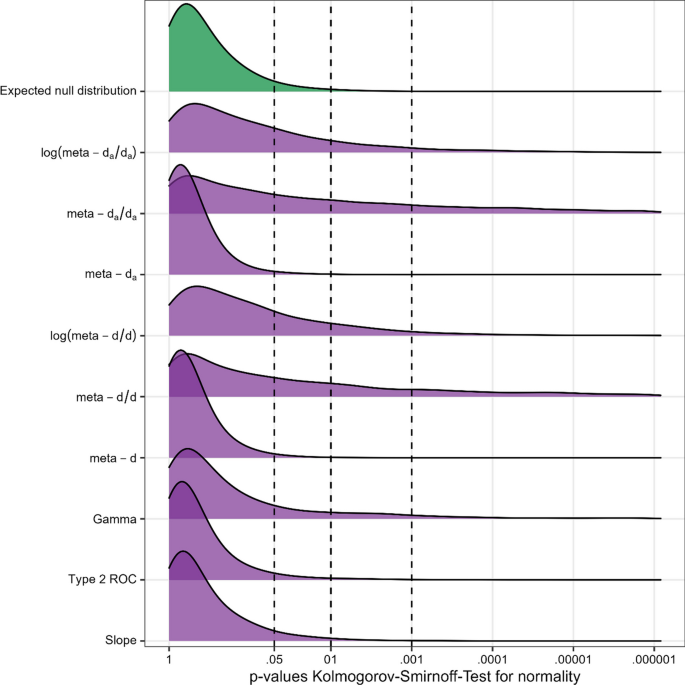评估元认知准确度的标准和分级测量的假阳性率
IF 4.8
2区 教育学
Q1 EDUCATION & EDUCATIONAL RESEARCH
引用次数: 0
摘要
元认知的一个关键方面是元认知准确性,即信心判断区分正确和错误试验的程度。为了量化元认知的准确性,研究人员面临着越来越多的不同方法。本研究通过从置信度数据库中分层重采样,调查了与各种元认知准确性测量相关的假阳性率,以准确地表示置信度判断的统计特性。我们发现,大多数基于每个参与者的汇总统计计算和随后的组水平分析的测量方法在假阳性率方面表现良好,包括gamma相关性,meta-d '和2型ROC曲线下的面积。Meta-d ' /d '与假阳性率相关,甚至低于5%,但对数转换的Meta-d ' /d '表现良好。HMeta-d的假阳性率取决于研究设计和先验规范:对于组设计,当两组都设置独立先验时,假阳性率在5%以上,但当组间差异设置先验时,假阳性率是足够的。对于连续预测变量,默认先验导致假阳性率低于5%,但当使用接近平坦的先验时,假阳性率与5%无法区分。逻辑混合模型回归分析与显著膨胀的假阳性率相关联,当随机斜率从模型规范中省略。一般来说,我们认为,除非假阳性率已被证明是足够的,否则不应使用元认知准确性的测量。本文章由计算机程序翻译,如有差异,请以英文原文为准。

Evaluating false positive rates of standard and hierarchical measures of metacognitive accuracy
Abstract A key aspect of metacognition is metacognitive accuracy, i.e., the degree to which confidence judgments differentiate between correct and incorrect trials. To quantify metacognitive accuracy, researchers are faced with an increasing number of different methods. The present study investigated false positive rates associated with various measures of metacognitive accuracy by hierarchical resampling from the confidence database to accurately represent the statistical properties of confidence judgements. We found that most measures based on the computation of summary-statistics separately for each participant and subsequent group-level analysis performed adequately in terms of false positive rate, including gamma correlations, meta-d′, and the area under type 2 ROC curves. Meta-d′/d′ is associated with a false positive rate even below 5%, but log-transformed meta-d′/d′ performs adequately. The false positive rate of HMeta-d depends on the study design and on prior specification: For group designs, the false positive rate is above 5% when independent priors are placed on both groups, but the false positive rate is adequate when a prior was placed on the difference between groups. For continuous predictor variables, default priors resulted in a false positive rate below 5%, but the false positive rate was not distinguishable from 5% when close-to-flat priors were used. Logistic mixed model regression analysis is associated with dramatically inflated false positive rates when random slopes are omitted from model specification. In general, we argue that no measure of metacognitive accuracy should be used unless the false positive rate has been demonstrated to be adequate.
求助全文
通过发布文献求助,成功后即可免费获取论文全文。
去求助
来源期刊

Metacognition and Learning
Multiple-
CiteScore
6.20
自引率
15.20%
发文量
39
期刊介绍:
The journal "Metacognition and Learning" addresses various components of metacognition, such as metacognitive awareness, experiences, knowledge, and executive skills.
Both general metacognition as well as domain-specific metacognitions in various task domains (mathematics, physics, reading, writing etc.) are considered. Papers may address fundamental theoretical issues, measurement issues regarding both quantitative and qualitative methods, as well as empirical studies about individual differences in metacognition, relations with other learner characteristics and learning strategies, developmental issues, the training of metacognition components in learning, and the teacher’s role in metacognition training. Studies highlighting the role of metacognition in self- or co-regulated learning as well as its relations with motivation and affect are also welcomed.
Submitted papers are judged on theoretical relevance, methodological thoroughness, and appeal to an international audience. The journal aims for a high academic standard with relevance to the field of educational practices.
One restriction is that papers should pertain to the role of metacognition in learning situations. Self-regulation in clinical settings, such as coping with phobia or anxiety outside learning situations, is beyond the scope of the journal.
 求助内容:
求助内容: 应助结果提醒方式:
应助结果提醒方式:


